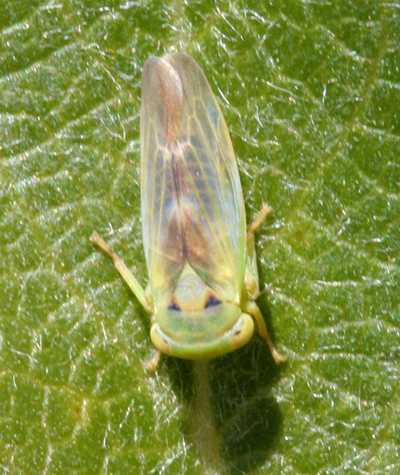Leafhoppers
July 2, 2015
Sucking pests
Leafhopper feeding causes stippling of plant leaves that is similar to damage caused by two-spotted spider mite. Leafhopper feeding can result in leaf distortion, chlorosis, plant stunting, leaf curling, leaf yellowing and necrosis. Extensive feeding damage gives plants a scorched appearance. Both the adults and nymphs are active, typically moving sideways when disturbed.

Leafhoppers are 3 mm long, slender and wedge-shaped. They are usually yellow to light green, depending on the species. They hold their wings roof-like over their body.
Leafhoppers feed on a wide variety of herbaceous perennials. The aster leafhopper transmits aster yellows disease.
Management
Remove weeds from adjacent areas – many weeds serve as a reservoir for leafhoppers. Contact insecticides may be used against leafhoppers, but control can be difficult because leafhoppers are very mobile.
Print a PDF of this page: Leafhoppers



 Print
Print Email
Email